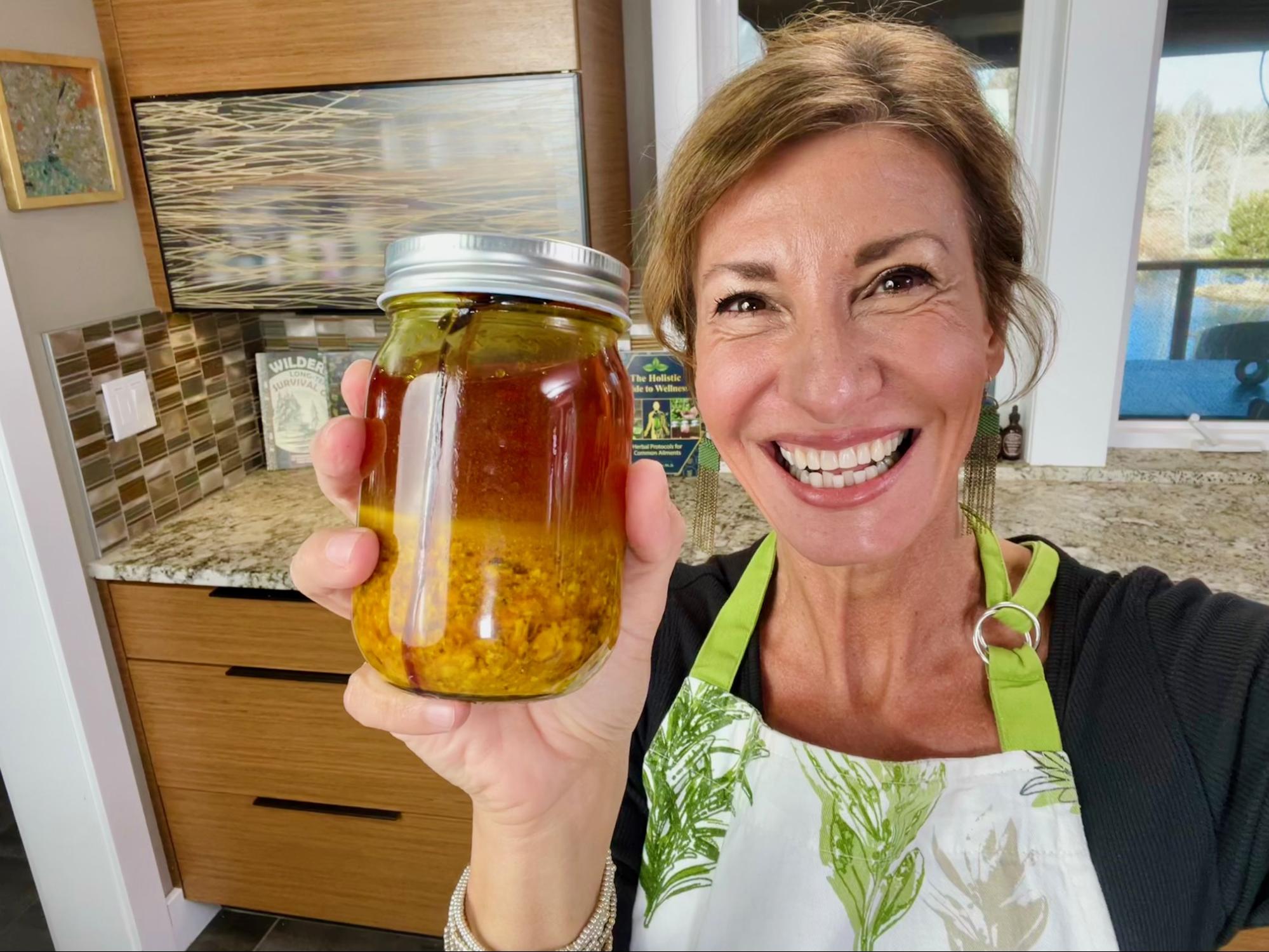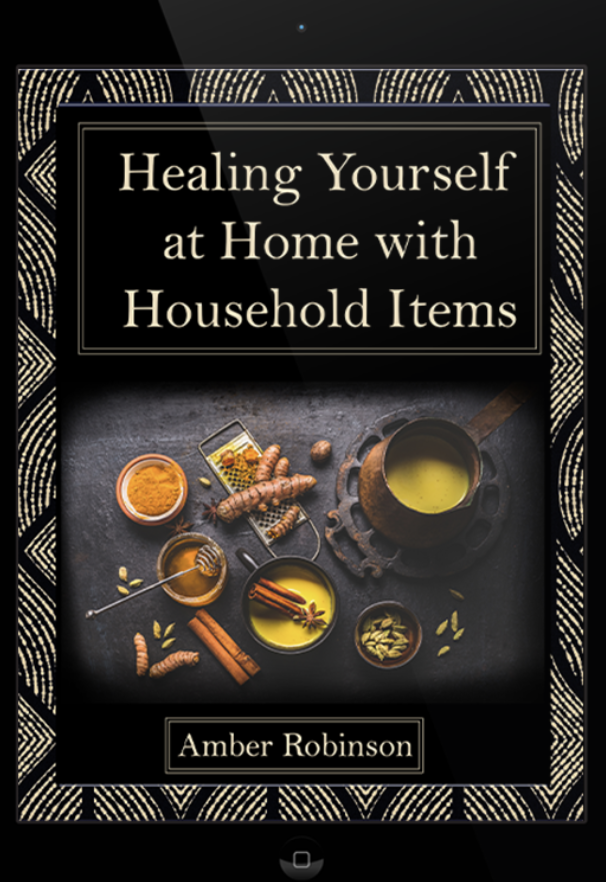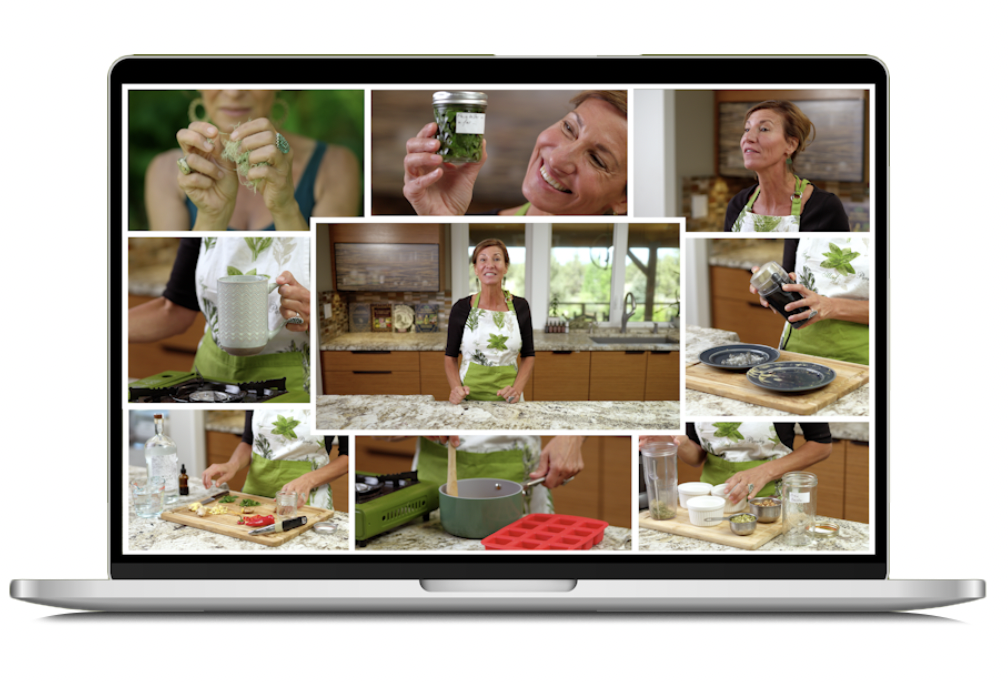A Healing Tradition Revived
An ancient remedy, oxymels were first documented in history around 400 BC. A simple syrup made of honey, vinegar, and often medicinal herbs, it was a popular folk medicine and culinary condiment in Ancient India, China, Greece, Persia, and the Roman Empire, as well as throughout Europe during the Middle Ages.1,2 Oxymels were also widely used in early colonial America. As time passed, they fell out of favor as pharmaceuticals emerged. Today, there is a resurgence of interest in these simple infusions not only by herbalists, but also the scientific community as the health benefits and active synergy between raw honey and vinegar are outperforming many of their chemical counterparts — including antibiotics for wound healing and infections.
Herbal Heritage
Traditionally used as a tonic for coughs, sore throats, and fevers, oxymels were also known to help alleviate colds and soothe asthma symptoms. Modern uses for oxymels include promoting healthy bacteria levels in the body; protecting against cellular damage through antioxidant action; supporting metabolic function such as appropriate weight, cardiovascular health, inflammatory response, and balanced blood sugar; as well as promoting healthy digestion.
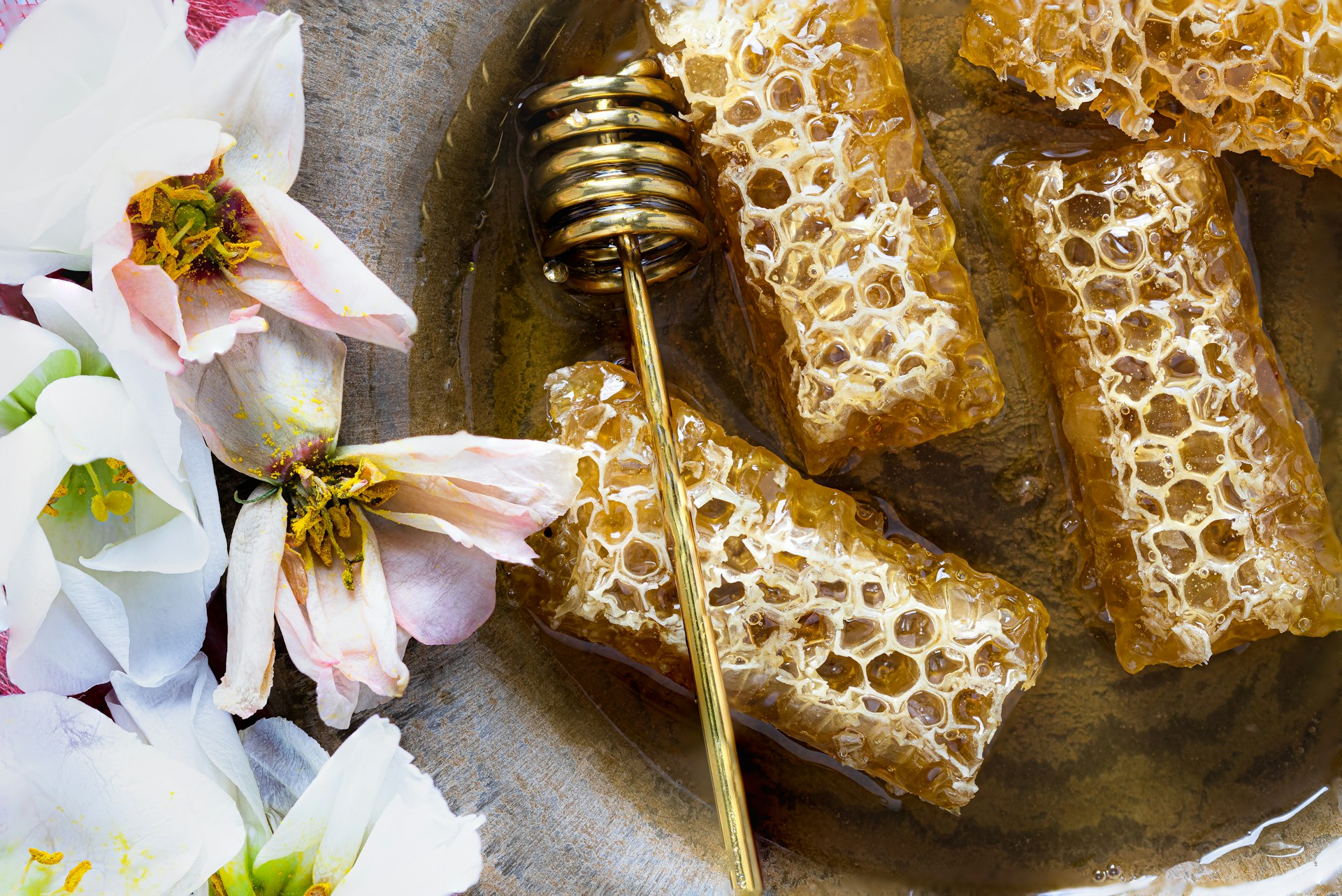
The Science Behind an Ancient Remedy
Conventional medicine has also taken note of these benefits. In a 2023 systematic review of preclinical and clinical studies, the researchers found oxymels had positive effects on the cardiovascular system, along with antioxidant and anti-inflammatory properties. Moreover, the team discovered oxymels were helpful for managing a range of diseases, including asthma, obesity, and type II diabetes.3
Likewise, a recent study published in the International Journal of Molecular Science established the health benefits of oxymels, including anti hyperglycemic effects for improved metabolic parameters such as insulin resistance; reduced weight and body mass index; easing of knee osteoarthritis symptoms; improved asthma; lowered serum cholesterol; and increased oxygen saturation in those with chronic obstructive pulmonary disease (COPD).6
Incredibly, research has also shown that topically applying oxymels to wounds significantly reduced antibiotic-resistant bacteria with the combination of vinegar and honey 1000 times more effective at killing bacteria than vinegar alone and 100,000 times more than honey alone.4,5,7
Scientists believe that the acetic acid content in the vinegar is key to its antimicrobial action. The following vinegars were shown to have the highest levels:7
Organic, unpasteurized, unfiltered pomegranate (7.71%)
Organic red wine vinegar (5.92%)
Organic, unpasteurized, unfiltered apple cider (5.05%)
Organic unpasteurized white wine (5.04%)
Manuka and standard, unpasteurized honey were both found to be effective for combating antibiotic-resistant bacteria when combined with vinegar as an oxymel.
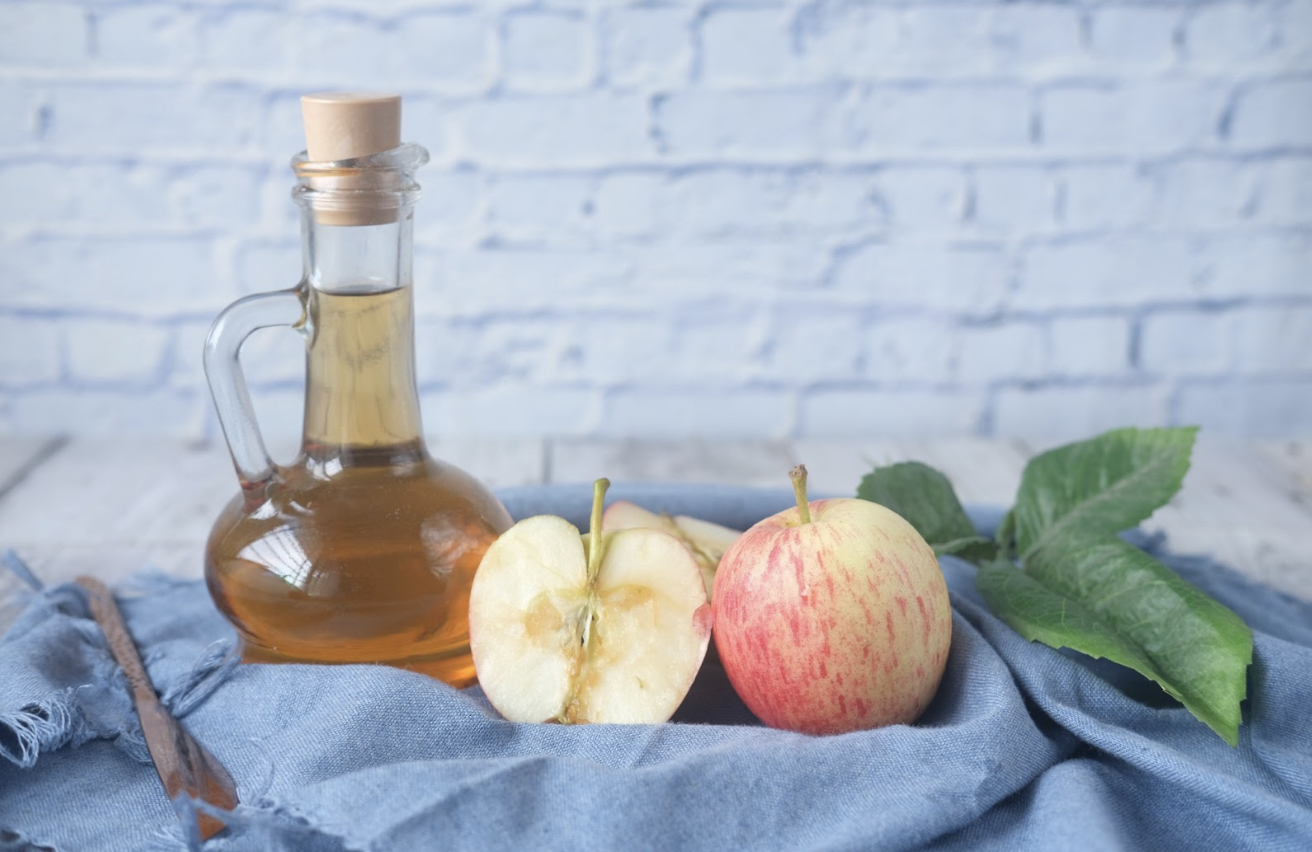
Recipe. Basic Herbal-Infused Oxymels.
Oxymels can offer digestive support, immune-boosting effects, respiratory relief, anti-inflammatory properties, and antioxidants — depending on the herbs used.
Ingredients:
- Vinegar: Choose apple cider vinegar, white wine vinegar, or any other mild vinegar
- Honey: Use raw, unprocessed honey for its health benefits and flavor.
- Herbs: Select dried or fresh herbs with medicinal or culinary properties.
- Glass Jar: A glass jar with an airtight lid for the infusion.
Instructions:
- Herb Selection: Choose herbs based on your desired health benefits or
flavor profile. For example, thyme, mullein, and sage may be used for respiratory
health, while rose petals and elderflowers offer a delicate floral taste. - Preparation: Chop or crush the herbs slightly to release their flavors and
properties. - Infusion: Fill your glass jar a quarter of the way full with your chosen
chopped herbs (if you are using fresh herbs, fill the jar three-quarters
of the way full) and pour in vinegar until the jar is three-quarters full, topping
the rest of the jar with raw honey. Seal the jar and let it sit in a cool, dark
place for about 2 weeks, shaking daily. - Straining: After the infusion period, strain out the herbs using a fine mesh
strainer or cheesecloth. - Bottling: Pour the oxymel into a clean glass bottle, seal it, and store it in the
refrigerator. It will last for several months.
Oxymels can be taken by the spoonful for health benefits, added to sparkling water for a refreshing drink, or used in salad dressings and marinades.
A Comprehensive DIY Resource for Health
Have you ever wanted to learn more about herbal medicine, but didn’t know where to begin? My latest book, The Forgotten Home Apothecary is an excellent resource for those just starting their herbalism journey as well as for individuals who are experienced and would like to deepen their knowledge. I specifically wrote this book to utilize readily available ingredients and plants to treat a wide range of common ailments, from oxymels to heavy metal detoxification, personal care products, and much more!
With these simple, DIY remedies, you can stock your herbal medicine chest and be prepared for any illness in case pharmaceuticals and/or first aid supplies are unavailable — or if you just want to make your own herbal medicine, as I do. This is knowledge commonly used by our ancestors that has been largely forgotten in our modern age. I’m here to change that!
Bonus Resources for You & Your Family
Along with The Forgotten Home Apothecary, I have bundled several bonus digital resources that help to improve and preserve the health, safety, and self-reliance of you and your family.
First is “The Lost Skills of the Great Depression” — a treasure trove of wisdom from our grandparents and great-grandparents that’s nearly vanished in today’s world. This guide reveals forgotten gardening techniques that can produce food in under three months, along with the resourceful “Great Depression foods” that helped families survive when supplies were scarce.
Next is “Healing Yourself with Household Items” — a handy guide to simple, natural remedies using everyday things you already have at home. From oatmeal for soothing eczema to sugar for stopping hiccups and even duct tape for warts, you’ll discover surprisingly effective solutions hiding in plain sight!
My third gift to you is “DIY Projects for a World Without Electricity” — a practical guide packed with essential off-grid skills. Whether you’re facing a short power outage or a longer-term emergency, this resource will show you how to stay prepared and self-sufficient. Inside, you’ll learn time-tested techniques like a 100-year-old method of preserving food without refrigeration, how to set up a rainwater catchment system, and even how to pull water from the air. It’s full of valuable, hands-on knowledge you’ll be glad to have — just in case.
To help you make the most of natural remedies, I’m also including lifetime streaming access to my Herbal Medicine Video Collection. In these hands-on, step-by-step videos, I walk you through the most requested recipes from my book, making it easy to follow along and build your confidence. You can watch anytime, revisit the lessons as needed, and refresh your skills whenever questions arise.
Tap here to purchase your copy of The Forgotten Home Apothecary and the included bonus digital gifts, only available here. I know you are going to love it!
Nicole Apelian
References
- Aghili Khorasani Shirazi M. Iran University of Medical Sciences; Tehran, Iran: 2010. Makhzan Al-Advieh. https://www.researchgate.net/publication/345011245_Preparation_of_Oxymel_Sekanjabin-e_Buzuri_Syrup_as_Vascular_Opener_Mofatteh_Product_and_Its_Standardization
- Ibn-e-Sina A. Dare Ehyae al-Torathe al-Arabi; Beirut: 2005. Al-Qānūn Fī Al-Tibb (Canon of Medicine).
- Darani, N. S., Vaghasloo, M. A., Kazemi, A., Amri, H., Rampp, T., & Hashempur, M. H. (2023). Oxymel: A systematic review of preclinical and clinical studies. Heliyon, 9(12), e22649. https://doi.org/10.1016/j.heliyon.2023.e22649
- Darani N.S., Vaghasloo M.A., Kazemi A., Amri H., Rampp T., Hashempur M.H. Oxymel: A systematic review of preclinical and clinical studies. Heliyon. 2023;9:e22649. doi: 10.1016/j.heliyon.2023.e22649
- Abolghasemi J., Jahromi M.A.F., Sharifi M.H., Mazloom Z., Hosseini L., Zamani N., Nimrouzi M. Effects of Zataria oxymel on obesity, insulin resistance and lipid profile: A randomized, controlled, triple-blind trial. J. Integr. Med. 2020;18:401–408. doi: 10.1016/j.joim.2020.06.003
- Olas, Beata. “Pro-Health Potential of Fruit Vinegars and Oxymels in Various Experimental Models.” International journal of molecular sciences vol. 26,1 7. 24 Dec. 2024, doi:10.3390/ijms26010007
- Harrison, Freya et al. “Sweet and sour synergy: exploring the antibacterial and antibiofilm activity of acetic acid and vinegar combined with medical-grade honeys.” Microbiology (Reading, England) vol. 169,7 (2023): 001351. doi:10.1099/mic.0.001351

